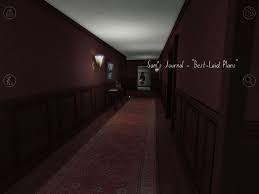Gone Home is a narrative mystery developed by Fullbright. I played it on the Nintendo Switch. The player experiences the story as Katie, a college student who is returning home from a trip to Europe. In the opening scene, the player learns to use the joysticks to walk, pan the camera, and pick up and examine objects as they search for a key to unlock the front door. This onboarding experience was effective because there was a limited amount of space and objects to explore and the goal of finding the key to open the door was obvious. It also set the expectation that this will be a game where examining the set closely for clues will be important. Objects that can be picked up or manipulated are indicated by the appearance of white text, with directions like “pick up key” or “open door”. A note on the front door introduces the mystery — where has Sam gone and why?

After entering the house, the player finds the house dark and in mild disarray. No one is home. An early clue comes in the form of a message on the answering machine, where an upset girl is attempting to reach Sam. We learn from a family portrait that Sam is Katie’s younger sister.

This design choice was a very effective way to “show, not tell” the story. The narrative is revealed bit by bit as the player picks up and examines books, letters, handwritten notes, journal entries, etc. The house is very large, and the game supplies a map that is updated as the player visits new rooms. This map is very necessary as otherwise it would be easy for the player to get lost. Long hallways and the strategic placement of doors are one way that the designers encourage the story to be experienced in roughly the desired order.

In each room, one of the first tasks is to find a way to turn on the light for that room. This mechanic supports the mystery through the metaphor of gradually shedding light on the occupants of the house through its contents, room by room, clue by clue. The fun comes from the challenge of putting the clues together to figure out the story. Overall, the game was successful in balancing the clues with irrelevant objects — always just enough to keep the story moving, but not so much as to make the hunt frustrating. There was one mechanic that, for me at least, temporarily broke the suspension of disbelief. It was a file cabinet with a combination lock — the need to examine the objects for clues to the code is such an escape room staple that it reminded me that I was playing a game. I suspect most players would not be bothered by it, though.

The use of audio clips for some written material, and the storage of these clips in the player’s object collection helped to highlight the most important clues. I look forward to returning to the game to finish the story.



